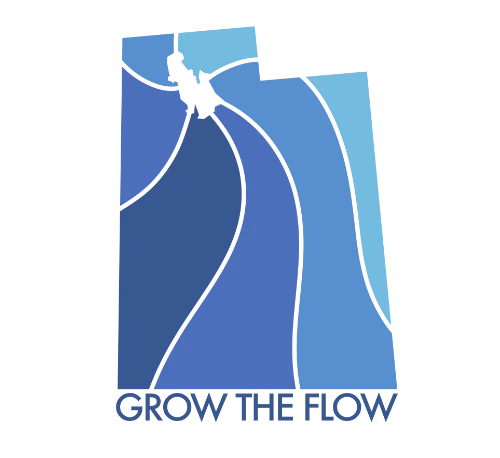Image Credit: Wolfgang Borchers on Pixabay
Long before Brigham Young gazed over Salt Lake Valley and pronounced, “This is the right place”, many indigenous communities relied on the Great Salt Lake Basin. The Shoshone, Goshute, and Ute tribes depended predominantly on nomadic practices, making use of the abundant ecosystem surrounding Great Salt Lake to hunt waterfowl, forage plants, and harvest salt for ceremony and trade. These communities also farmed the fertile land around the lake—growing maize, squash, and beans—to avoid food shortages.
As Mormon pioneers settled the Salt Lake Valley, they transformed the land to “make the desert bloom.” Mormons introduced and expanded canal irrigation techniques to Utah, and canal systems were soon used by settlers to farm all across the Southwest. By 1865, less than twenty years after Brigham Young’s arrival, settlers had dug well over 1000 miles of canals throughout Utah, and by 1890, the Mormons irrigated more than 265,000 acres of land. In just decades, the pioneers transformed an abundant but unforgiving Salt Lake Valley into a productive refuge ready to support the needs of a burgeoning community.
It must be stated, this success came at the expense of the Indigenous communities in and around Great Salt Lake. Of the many acts to displace, assimilate, and control Native American communities, none are worse than the Bear River Massacre. Amidst increased settler presence in Cache Valley, ongoing raids, and culminating tensions, a U.S. Army troop was sent to a Soshone settlement on Battle Creek with instructions to leave no prisoners. The soldiers, shielded by darkness, surrounded the encampment and killed no less than 350 Shoshone men, women, and children. The Bear River Massacre remains the single most deadly attack on Native Americans in United States history, and the subsequent Box Elder Treaty forced the Shoshone to forfeit their homeland or face extermination.
The history of agriculture surges through the veins of all Utahns. It has provided us with the resources and autonomy to grow and thrive as a state. However, this history is complex, and it cannot be understood without recognizing the changes it has brought to the land and communities historically dependent on this region. For decades, Utah farmers and ranchers have had the privilege of fertile lands and abundant waters. Today, this reality has changed.
The same techniques that brought Utah residents bounty are pushing the Great Salt Lake towards collapse. Agricultural demand has lowered Great Salt Lake by eleven feet, and farming consumes more than 70% of the water in the Great Salt Lake Basin. Many farms throughout Salt Lake Valley still use inefficient, earthen canals dug by 19th century pioneers. Many farmers in Northern Utah struggle to turn a profit, and they remain rightfully hesitant to reduce their consumption as water is increasingly their most valuable asset. If we wish to save Great Salt Lake and provide farmers with tools to work the land in the modern age, change must come.
In order to prevent ecological collapse of Great Salt Lake, water management in Northern Utah must undergo a physical and cultural shift. And it seems this shift has started. Since 2021, the state has allocated roughly $300 million to subsidize improvement projects on irrigation systems across Utah. The era of “use it or lose it” has ended, and conservation is finally recognized as a beneficial use for water. Willing farmers are growing new crops to meet the demands of a changing world. The state established a $40 million trust to lease or receive donated water dedicated to Great Salt Lake. Now, we must ask ourselves the difficult questions.
The rate of change in the agricultural sector has not met the urgency needed to address and refill a shriveling Great Salt Lake. On average, completed agriculture optimization projects have reduced water consumption by 15% to 30%, but the farmers have no obligation to conserve this water and can sell excess shares to users further downstream. We must work alongside the industry which has been culturally and economically vital to Utah long before the state’s inception. Equally, we must recognize the 21st century is the era of water scarcity, not abundance and unfettered growth.
Utah needs to make difficult decisions in the coming years if we hope to restore Great Salt Lake. By approaching this problem collaboratively—with voices from indigenous leaders and farmers alike—we stand a chance of transforming the agricultural sector into a productive industry that benefits those working the land and Great Salt Lake.
